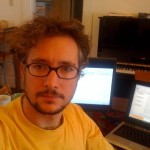The Nuts and Bolts Behind 4636 in Haiti

Jan 22, 2010

The 4636 emergency shortcode has been setup to run on the Digicel and the Comcel networks in Haiti. It has been running for six days now, with a great deal of usage taking a large amount of communication by the volunteers around the project. Rob Munro is one of the key figures in this process. This is his report on how things have come together.
The 4636 Process
People in Haiti text location, name and requests for aid / reports etc. to 4636.
The data is streamed from different celtels to a server hosted by Ushahidi.
100s of Kreyol-speaking volunteers translate, categorize and plot the geocoords of the location if possible.
The structured data is streamed to different orgs on the ground like Red Cross and InSTEDD, who act on it / pass it to appropriate people there.
It is also streamed to the main Ushahidi database (the publicly viewable one) where it is combined with other data, further annotated etc. and made available to other orgs.
I am making sure that #3 happens, coordinating volunteer efforts. I have only worked a little on the software - this was put together primarily by Brian Herbert of Ushahidi who has been an *angel* in getting everything together so fast. A small number of the volunteers I work with coordinate directly with people on the ground to get improved data (this also happens further down the chain). I am also coordinating the volunteers for migrating Missing Person records to the main PeopleFinder databaase - many 4636 volunteers do this in downtime when volunteers exceed the texts coming in, but I've got other groups involved too (Tim Schwartz adapted Brian's code for this in lightening speed).
The Volunteers
Of all the incredible efforts in crowdsourcing right now, I think that the work of the 4636 volunteers are the most amazing. They are using a simple form to enter data from the text messages, have parallel screens open with different maps and collaborate with each other on a chat-space dedicated to their work, esp for confirming locations. Some positive results are attached, and here are a few lines from the 4636 chat-space:
(12:52:55) (Dalila): I need Thomassin Apo please (12:53:02) (Apo): wait (12:54:53) (Apo): Kenscoff Route: Lat: 18.495746829274168, Long:-72.31849193572998 (12:57:25) (Apo): This Area after Petion-Ville and Pelerin 5 is not on Google Map. We have no streets name (12:58:05) (Dalila): @Apo I thank you for ur help (12:58:24) (Apo): you are welcome (12:58:53) (Apo): I know this place like my pocket (12:59:08) (Dalila): :) (12:59:14) (Dalila): thank God u was here
In brief, Dalila asked to know an address written in one of the texts she was translating and 2 minutes later she had the latitude and longitude, even though no map showed it, thanks to the local knowledge of Apo. This has been *typical*. Almost noone is physically together (after a week I met Josh Nesbit, the other main coordinator for 4636, face-to-face briefly last night, and that's been all) Here are the screen names people have used in the 4636 chat - most of them will prob never know each other:
Admiral, Apo_Montreal, Barb, Brian, Carline, Caroline, Christina_Xu, Claire, Dalila, Gina, Guerda, J-R, Jenn, Jennifer, M300_Ministrie, Mel, Montreal, Nan, RAM, Rebecca, Regine, Robens, Robert_Montgom, Robert_Munro, Robs, Sebastien, UNIONHAITI, Union_Haiti, Victoria, aline, brianherbert, csik, downeym, duygu, gerhard, gina, guerda, marc, maribux, mik, myrka, nick, pouchon, rebecca, regine, rescuemehaiti, ronny, sandra, stephan
These are from the ~1000 people who have stepped in so far (my guess from IPs). It would be great if this list could be publicized - their efforts need to be recognized however pseudo-anonymous they are! They are often using their own local resources (texting to Haiti) to better translate / clarify the messages:
(11:56:55) (marc): i will pass it on that is my cousins hospital.
Text volumes vary from one every 5 seconds in the day to every 5 minutes overnight. The average turn-around for us receiving a text and having it translated, categorized and back on the ground with coordinates, message and return # is about 10 minutes. Here are the most common categories:

Food distribution 23.27% Missing Persons 11.06% Asking to forward a message 10.94% Response 9.79% Water shortage 9.33% Health services 5.65% Medical Emergency 4.38% People trapped 4.38% Shelter 3.46% Earthquake and aftershocks 3.23% Emergency 3.00% Persons News 2.19% Collapsed structure 1.73% Non-food items 1.73% Vital Lines 1.04% Except for 'Asking to forward a message', these all correspond to WHO categories of the same name (I hope the WHO add this as a result of this effort). About Robert Munro

I specialize in computational linguistics as applied to social development, with a recent focus on processing multilingual SMS messages in less-developed regions. It was an obscure thing to be doing until a week ago. My background is in both software development and social development. I am currently completing a PhD in linguistics at Stanford and consulting for NGOs in West Africa. I was pulled into this project by Josh Nesbit, from FrontlineSMS:Medic. I knew noone else previously. It has been humbling to work with so many amazing volunteers and engineers